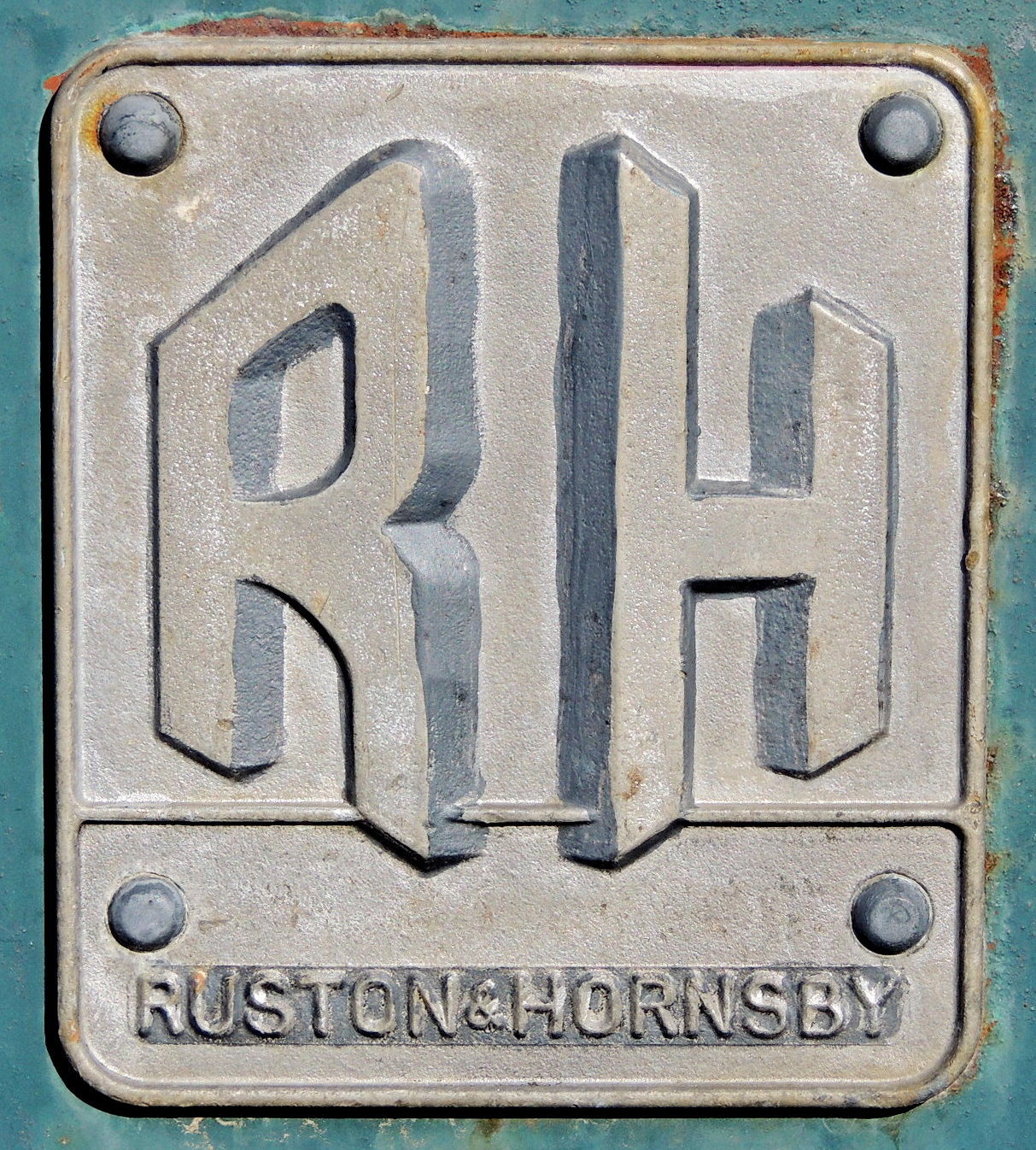
Across Main Street from the venerable old Salmo Hotel, and behind the
World's Largest Penny, are several pieces of machinery once used locally in the forestry and mining industries, including this blue painted, British built, Ruston & Hornsby 0-4-0 locomotive. On first glance one might be forgiven for believing that this is an electric locomotive designed for use underground. Further inspection, though, will reveal that it is powered instead by a small four cylinder, valve in block, diesel power plant. Locally, this would have been used as a switcher in a lumber yard/saw mill or outside of a mine or mine tipple, for moving ore cars around as needed.
Note below that Ruston & Hornsby also manufactured locomotives designed for underground use, so that cannot completely be discounted as a possibility for this locomotive.
Ruston & Hornsby was a British manufacturer of locomotives and diesel engines. Their specialty was in the production of small (such as this example) to medium sized diesel switching locomotives in the 10 to 200 horse power range. We know little about this unit, beyond the fact that it appears to have been equipped with a three speed gearbox and, likely, a torque converter drive.
RUSTON & HORNSBY LOCOMOTIVES
Ruston, Proctor & Co. Ltd. produced their first internal combustion locomotives in 1915. The locomotive was closely based on contemporary locos being built by the German firm of Deutz. About a dozen were produced between 1915 and 1918 mostly for use in munitions factories. They were powered by Ruston's 10hp ZRH single cylinder engine (or a two-cylinder in the 20hp version), which was started on petrol and once warmed up, was switched to paraffin. Some of these locos were built under Ruston & Hornsby and were given numbers in their series. The last known loco of this type was delivered in 1930 (w/n 147026).
It was not until 1931 that Ruston & Hornsby Ltd. started to build new locomotives of their own design, this was done to keep the works going during the prevailing slump of the time. The first R&H designed locomotive was a 2-ft gauge, 10hp oil-engined loco, powered by a twin cylinder vertical engine, made by Lister of Dursley, Gloucestershire. The first loco, w/n 163997 was delivered to Manchester Corporation on 1st September 1931.
Underground Locomotives
A large number of narrow gauge Rustons worked underground in mining or tunneling, both at home and abroad and had to be adapted for this work. The main feature that allows an oil engined loco to work below ground is the exhaust conditioner, this device cleans the irritant constituents of the exhaust gases from the engine so they do not pass into the atmosphere where they would build up and make working conditions unbearable.
In some mines the clearances were limited and the driver had to sit lower down, this meant that bodywork alterations had to be made so he could still see where he was going. In many early locos this was done by fitting a flatter engine cover vent and flat topped fuel tank.
The first loco built by Rustons for underground use was a 10hp type W/n 166027 and was delivered for use by Messrs Cafferata in their Hawton gypsum mine in Nottinghamshire.
From Ruston